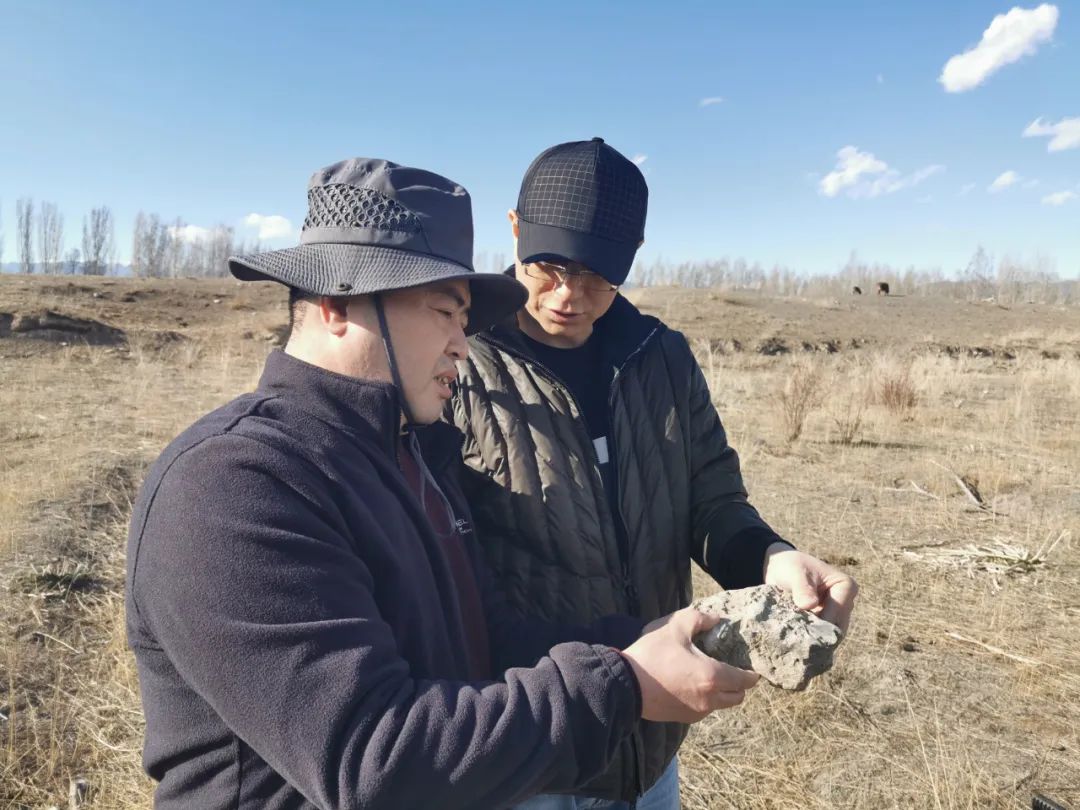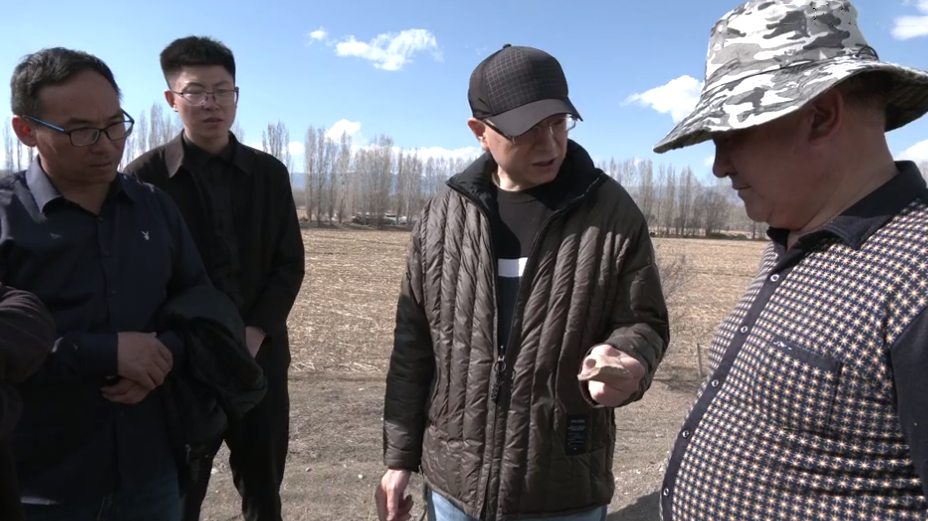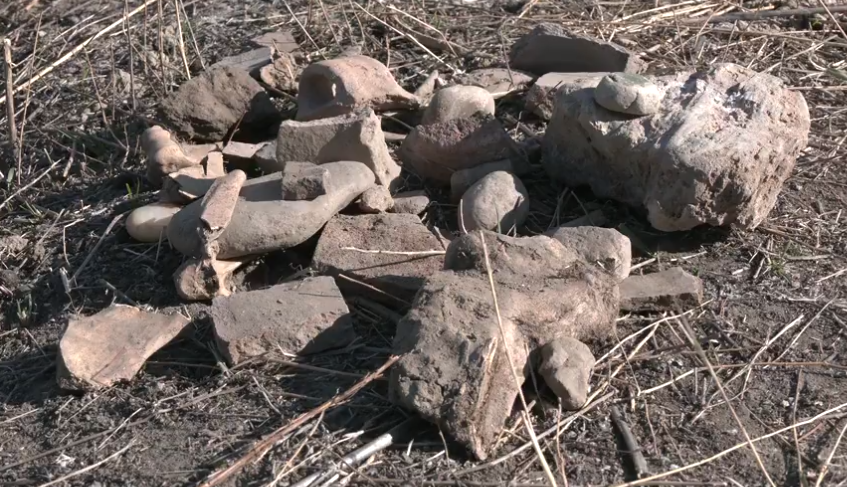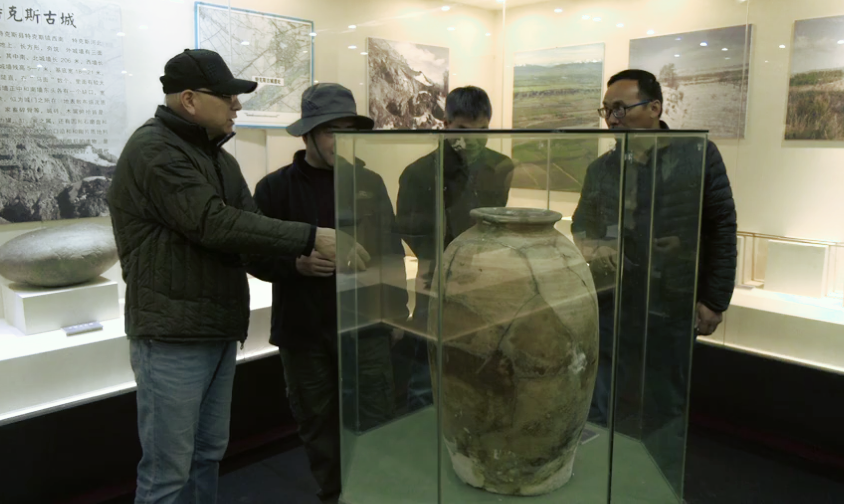"Archaeology + photography" opens a new pattern of cultural exploration project in Tekes County
On March 31, a group of three experts from the Department of Archaeology and Cultural Relics of the School of History of Nanjing University, together with a group of archaeological and photographic experts from the Beijing Correspondence College of the Chinese Photographers Association, came to Tekes County to carry out a field survey of the ruins of the ancient city of Bostan and the ancient burial sites of the Karajun scenic area in Tekes County, in order to build an archaeological and photographic teaching base for the later stage of the project. The group did their homework by "archaeology + photography", in order to build an archaeological and photography teaching base and declare the Wusun Ancient Road as an important part of the Xinjiang section of the Silk Road.

Professor Wu Guibing, Head of the Department of Archaeology, School of History, Nanjing University, and other experts discussing the collected stone fragments
Professor Wu Guibing, director of the Department of Archaeology and Cultural Relics and PhD supervisor at the School of History of Nanjing University, and a group of experts from the Beijing Correspondence College of the China Photographers Association, led by the staff of the Cultural and Museum Institute of Tekes County, inspected and photographed the site of the ancient city of Botstein in Tekes County, and collected remnants of pottery, a few animal bones, stone fragments and other historical relics on the ground at the site.

Experts from the School of History of Nanjing University discussing the collected stone fragments, photo by Zhang Zhengbin
The ruins of the ancient city of Tekes (formerly known as the ancient city of Bostan) are square, built in a 'slab' fashion, with surviving walls 5-7 metres high and 18-21 metres wide at the base, with a large slope on the inner wall surface and a steeper and straighter outer wall surface, with a 'horse face' every few metres on the western and northern outer walls. It is the presence of the "horse face" that archaeologists deduce to be a Han-style building. According to Professor Lu Guoyen of the Xinjiang Uygur Autonomous Region Institute of Archaeology, the ancient city was a military city garrisoned by the Xiaoxiang Army during the Tang Dynasty (7th to 10th centuries AD). According to the New Book of Tang, the 'Xiaoxiang Army' was stationed in the Tekes River Valley during the Tang Dynasty. He argues that the discovery of a complete, large-scale Han-style ancient city in the predominantly nomadic Yili Valley demonstrates the direct administrative jurisdiction of the central government over the western region during the Tang Dynasty. Therefore, an in-depth investigation of the ruins of the ancient city of Tekes is of irrefutable historical significance in further confirming the direct administrative jurisdiction of the central government over the Western Region during the successive dynasties.

A group of experts from the Department of Archaeology and Cultural Relics, School of History, Nanjing University, collected residual pottery shards, a few animal bones, stone fragments and other relics on the ground at the site Zhang Zhengbin
Wu Guibing, professor and doctoral supervisor of the Department of Archaeology and Cultural Heritage at Nanjing University's School of History, said: "There is no doubt that the ancient city of Bostan has a certain amount of time and history, this is undoubtedly true. "
"After photography entered China, archaeology was one of the first areas where photography was applied. This research on the ancient city of Botstein, together with the School of History of Nanjing University and the Tekes Cultural Heritage Bureau, also establishes a basis for the subsequent full-process archaeological photography and archaeological photography study base, and we hope that more photographers, heritage enthusiasts and students interested in traditional Chinese culture will be able to participate in our project in the future." Long Long of the China Photographers Association Beijing Correspondence School of Photography said.

A group of experts from the Department of Archaeology and Cultural Relics of the School of History of Nanjing University visited the Tekes County Museum, Zhang Zhengbin
The 20th Party Congress report proposed to increase the protection of cultural relics and cultural heritage, strengthen the protection and transmission of history and culture in urban and rural construction, and build and use national cultural parks. Tx County through the promotion of school cooperation, training a number of high-quality professionals, continue to strengthen archaeological and cultural relics protection efforts, in-depth implementation of cultural Ruijiang project, fully excavate, protect, inherit and make good use of the rich cultural relics resources, multi-level, all-round and three-dimensional to tell the good story of China, promote national unity, cast a firm sense of the Chinese national community.
Huang Jiang Yong, member of the party group of the Cultural Tourism Bureau of Tekes County and director of the Cultural and Museum Institute, said, "As the county implements the spirit of the two national conferences, we are fortunate to invite several teachers from the School of History of Nanjing University and the China Photographers Association Beijing Institute of Photography to come to the ancient city of Tekes Botstein to step in and make some preliminary preparations for making every effort to build an archaeological and photographic study base in Tekes County, and Bring the ancient Wusun Road into the national cultural heritage database, and strive to make it an important part of the cultural heritage of the World Silk Road, as a way to promote the cultural tourism of Tekes to upgrade again, and further expand the influence of Tekes as a national historical and cultural city."

